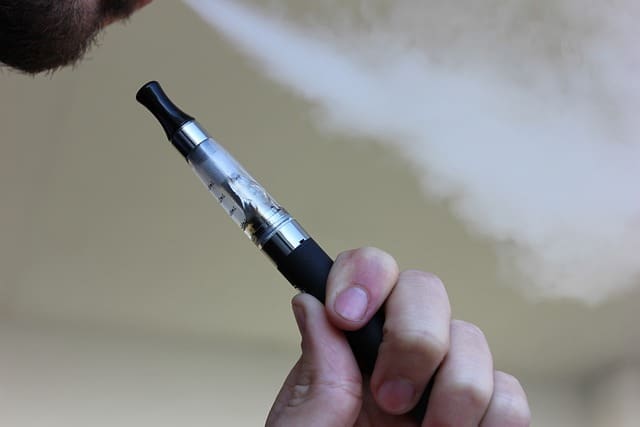For ages, smoking has been the perfect example of undesirable propensities connected to a variety of perilous sicknesses and unexpected losses. Nonetheless, lately, another competitor has arisen in the realm of nicotine utilization: vape. E-cigarettes, frequently promoted as a more secure option in contrast to conventional tobacco smoking, have ignited a worldwide discussion over their relative well-being. In this article, we will dig into the science, dangers, and contentions encompassing vaping and smoking to decide if one is really safer than the other.
The Evolution of Smoking and the Rise of Vaping
Before we dig into the near investigation, understanding the verifiable context is essential. Smoking, essentially as burnable tobacco, has been an inescapable propensity for quite a long time. The risks of smoking, principally connected to cellular breakdown in the lungs, coronary illness, and respiratory diseases, have been widely archived.
The presentation of electronic cigarettes, or e-cigarettes, in the mid-2000s upset nicotine utilization. Dissimilar to conventional cigarettes, e-cigarettes heat a fluid, frequently containing nicotine, to create a spray that clients breathe in. This development was showcased as a less unsafe option in contrast to smoking, basically interesting to smokers who were attempting to stop. In any case, is vaping really safer?
The Components: Vaping vs. Smoking
To look at the security of vaping and smoking, we really want to analyze the parts of each.
Smoking:
Tobacco: Customary cigarettes contain tobacco leaves, which, when consumed, discharge a large number of destructive synthetic substances, including tar and carbon monoxide.
Burning: Smoking includes ignition, which creates high temperatures and produces smoke that contains cancer-causing agents and harmful synthetic substances.
Vaping:
E-Liquid: E-cigarettes use e-fluids, which ordinarily consist of nicotine, propylene glycol, vegetable glycerin, and flavorings. The shortfall of tobacco and ignition separates vaping from smoking.
Aerosol: Rather than smoke, vaping produces a spray or fume. While it might contain less harmful substances than tobacco smoke, it isn’t totally liberated from gambling.
The Risks of Smoking

The risks of smoking are deeply rooted, with a critical collection of logical proof supporting its part in causing different illnesses and medical issues.
Lung Cancer: Smoking is the main source of cellular breakdown in the lungs. The cancer-causing agents in tobacco smoke can harm lung tissue, prompting the advancement of dangerous growths.
Cardiovascular Sickness: Smoking adds to the restricting of veins, expanding the gamble of coronary illness and stroke.
Chronic Obstructive Pneumonic Illness (COPD): Smoking is the essential driver of COPD, a gathering of lung conditions that incorporates persistent bronchitis and emphysema.
Respiratory Contaminations: Smokers are more defenseless to respiratory diseases, for example, pneumonia and bronchitis, because of impeded lung capability and debilitated safe reactions.
Handed-down cigarette smoke: Even non-smokers can be hurt by handed-down cigarette smoke, which contains a significant number of similar destructive substances found in direct tobacco smoke.
The Risks of Vaping


While vaping is, in many cases, depicted as a more secure option in contrast to smoking, it isn’t without gambling. Coming up next are a portion of the well-being concerns related to vaping:
Nicotine Addiction: Most e-cigarettes contain nicotine, which is profoundly habit-forming. Nicotine enslavement can prompt the utilization of vaping gadgets, and for non-smokers, it can act as a door to conventional smoking.
Lung Issues: Vaping vapor sprayers can contain destructive synthetic substances, for example, formaldehyde and acetaldehyde, which can aggravate the lungs and lead to respiratory issues.
Popcorn Lung: Some e-cigarette flavorings contain diacetyl, a compound connected to a condition known as “popcorn lung” or bronchiolitis obliterans, which causes irreversible lung harm.
Unknown Long-Term Effects: Vaping is a generally late peculiarity, and the drawn-out well-being impacts are not yet completely comprehended. It might require a very long time to decide the full degree of vaping-related well-being chances.
The Comparative Safety of Vaping vs. Smoking
To resolve whether or not vaping is more secure than smoking, taking into account accessible examination and well-qualified opinions is fundamental.
Vaping
While at the same time, vaping isn’t totally sans risk, proof proposes that it is possibly less harmful than smoking customary cigarettes. This appraisal depends on the way that vaping wipes out the ignition cycle and the immense range of poisonous synthetic compounds created by consuming tobacco. In any case, it’s vital to underscore that vaping isn’t without gambles, especially because of its capability to prompt nicotine fixation and lung issues.
Smoking
Smoking is unequivocally connected with a huge number of serious well-being gambles, including cellular breakdown in the lungs, cardiovascular sickness, and ongoing respiratory circumstances. The ignition of tobacco creates a mixed drink of hurtful synthetics that are missing in vaping.
Public Health Implications
The near security of vaping and smoking has critical general well-being suggestions. Here are a few central issues to consider:
Harm Reduction: For people who can’t stop smoking through different means, changing to vaping may offer a mischief-reducing procedure. It might possibly lessen openness to probably the most hurtful parts of tobacco smoke.
Youth and Non-Smokers: The allure of vaping, especially its captivating flavors, represents a huge gamble to youth and non-smokers. Endeavors should be made to forestall non-smokers, particularly teenagers, from taking up vaping.
Guideline: The guideline for both vaping items and conventional cigarettes is vital to safeguard general well-being. Stricter guidelines on promoting flavorings and age limitations are fundamental to limiting the allure of vaping to youngsters.
Stop Smoking Assets: Assets for stopping smoking, like guiding and nicotine substitution treatments, ought to keep on being generally accessible and elevated to assist people with progressing away from tobacco altogether.
Conclusion
In the discussion of vaping as opposed to smoking, apparently, vaping holds an expected benefit as far as mischief decreases because of the shortfall of burning and the related poisonous results. Nonetheless, this doesn’t make vaping completely protected, particularly taking into account the dangers related to nicotine dependence and the potential for lung disturbance.
For current smokers who can’t or are reluctant to stop, changing to vaping under the direction of medical services experts might offer a less hurtful other option. Notwithstanding, for non-smokers and youngsters, the dangers related to vaping are unsettling, and counteraction endeavors are principal.
Eventually, both vaping and smoking convey well-being gambles, and the ideal decision for one’s well-being is to neither vape nor smoke. Extensive tobacco control measures, including government-funded training, guidelines, and backing for stop smoking, stay basic in diminishing the general damage brought about by nicotine dependence and tobacco use.
Featured Image by Alfi Mahini from Pixabay




